Graphene-based nano-antennas may enable nanonetworks, terabits-per-second wireless communications
December 30, 2013

Internet of nanothings (credit: Ian Akyildiz and Josep Jornet)
Georgia Tech engineers have developed a way to use graphene nano-antennas to allow for devices powered by small amounts of scavenged energy.
With antennas made from conventional materials like copper, communication between low-power nanomachines would be virtually impossible. That’s because at that size, antennas normally operate at higher frequencies.
The communications challenge is that at the micron scale, metallic antennas would have to operate at frequencies of hundreds of terahertz*, but their range would be limited by propagation losses to just a few microns (millionths of a meter). And they’d require lots of power — more power than nanomachines are likely to have.
But by taking advantage of the unique electronic properties of graphene, the researchers found, graphene could generate an electronic “surface wave” that would allow nanonetworks of antennas just one micron long and 10 to 100 nanometers wide to do the work of much larger antennas, based on their modeling and simulations.
“We are exploiting the peculiar propagation of electrons in graphene to make a very small antenna that can radiate at much lower frequencies than classical metallic antennas of the same size,” said Ian Akyildiz, a Ken Byers Chair professor in Telecommunications in the School of Electrical and Computer Engineering at the Georgia Institute of Technology.
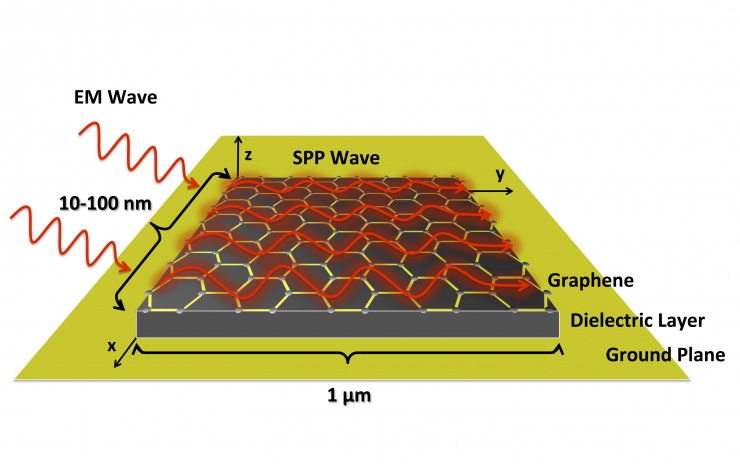
Schematic shows how surface plasmon polariton (SPP) waves would be formed on the surface of tiny antennas fabricated from graphene. The antennas would be about one micron long and 10 to 100 nanometers wide. (Credit: Ian Akyildiz and Josep Jornet)
“When electrons in graphene are excited by an incoming electromagnetic wave, for instance, they start moving back and forth,” explained Akyildiz. “Because of the unique properties of the graphene, this global oscillation of electrical charge results in a confined electromagnetic wave on top of the graphene layer.”
Known technically as a “surface plasmon polariton” (SPP) wave, the effect will allow the nano-antennas to operate at the low end of the terahertz frequency range, between 0.1 and 10 terahertz — instead of at 150 terahertz with traditional copper antennas at nanoscale sizes. For transmitting, the SPP waves can be created by injecting electrons into the dielectric layer beneath the graphene sheet.
Materials such as gold, silver and other noble metals also can support the propagation of SPP waves, but only at much higher frequencies than graphene. Conventional materials such as copper don’t support the waves.
By allowing electromagnetic propagation at lower terahertz frequencies, the SPP waves require less power — putting them within range of what might be feasible for nanomachines operated by energy harvesting technology pioneered by Zhong Lin Wang, a professor in Georgia Tech’s School of Materials Science and Engineering.
“With this antenna, we can cut the frequency by two orders of magnitude and cut the power needs by four orders of magnitude,” said Jornet. “Using this antenna, we believe the energy-harvesting techniques developed by Dr. Wang would give us enough power to create a communications link between nanomachines.”
“We believe that this is just the beginning of a new networking and communications paradigm based on the use of graphene.”
The researchers are also working on graphene-based nanoscale transceivers and the transmission protocols necessary for communication between nanomachines.
Terabits-per-second wireless networks
The nanomachines in the network that the researchers envision would include several integrated components. In addition to the energy-harvesting nanogenerators, there would be nanoscale sensing, processing and memory technologies, which are under development by other groups. The nanoscale antenna and transceiver work being done at Georgia Tech would allow the devices to communicate the information they sense and process to the outside world.

Wireless-access networks for 5G systems (credit: Ian Akyildiz and Josep Jornet)
Hundreds or thousands of graphene antenna-transceiver sets might also be combined to help full-size cellular phones and Internet-connected laptops communicate faster.

Wireless ultra high speed indoor networks (credit: Ian Akyildiz and Josep Jornet)
“The terahertz band can boost current data rates in wireless networks by more than two orders of magnitude,” Akyildiz noted. “The data rates in current cellular systems are up to one gigabit-per-second in LTE advanced networks or 10 gigabits-per-second in millimeter wave (or 60 gigahertz) systems. We expect data rates on the order of terabits-per-second in the terahertz band.”
The unique properties of graphene are critical to this antenna — and other future electronic devices, Akyildiz says. “Graphene is a very powerful nanomaterial that will dominate our lives in the next half-century,” he said. “The European community will be supporting a very large consortium involving many universities and companies with an investment of one billion euros to conduct research into this material.”
The researchers have so far evaluated numerous nano-antenna designs using modeling and simulation techniques in their laboratory. The next step will be to actually fabricate a graphene nano-antenna and operate it using a transceiver also based on graphene.
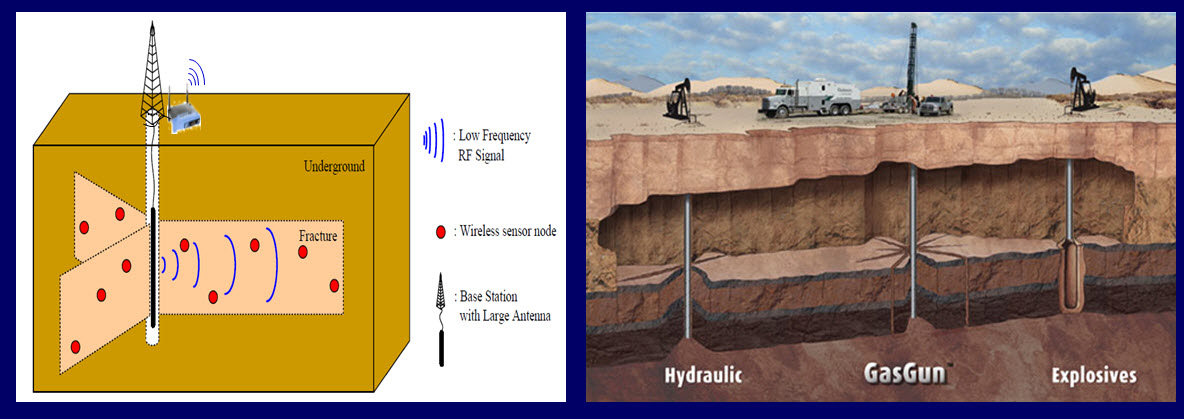
Nanorobots for oil reservoir discovery and monitoring (credit: Ian Akyildiz and Josep Jornet)
“Our project shows that the concept of graphene-based nano-antennas is feasible, especially when taking into account very accurate models of electron transport in graphene,” said Akyildiz. “Many challenges remain open, but this is a first step toward creating advanced nanomachines with many applications in the biomedical, environmental, industrial and military fields.”
So what else can we do with graphene nano-antennas and when?
“The applications of this research are twofold,” said researcher Dr. Josep Miquel Jornet, now assistant professor at the State University of New York at Buffalo, in an interview with KurzweilAI. “On one hand, the very small size of the developed graphene-based nano-antennas and nanotransceivers allows them to be embedded into novel nanomachines.”
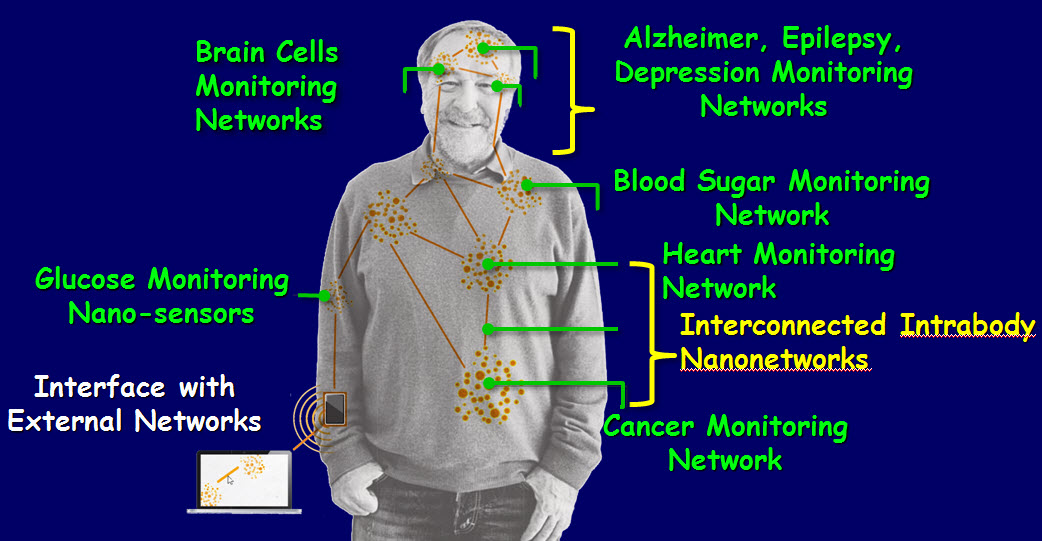
Biological nanomachiness applications: advanced health systems (credit: Ian Akyildiz and Josep Jornet)
“For example, these can be incorporated into biological and chemical nanosensors to ultimately create Wireless NanoSensor Networks (WNSNs), with applications in advanced health monitoring systems. The size of the individual wireless nanosensor mote would allow the integration of WNSNs in virtually everything, from the fabrics of our clothing to the coating of a vehicle, or even inside the human body.”
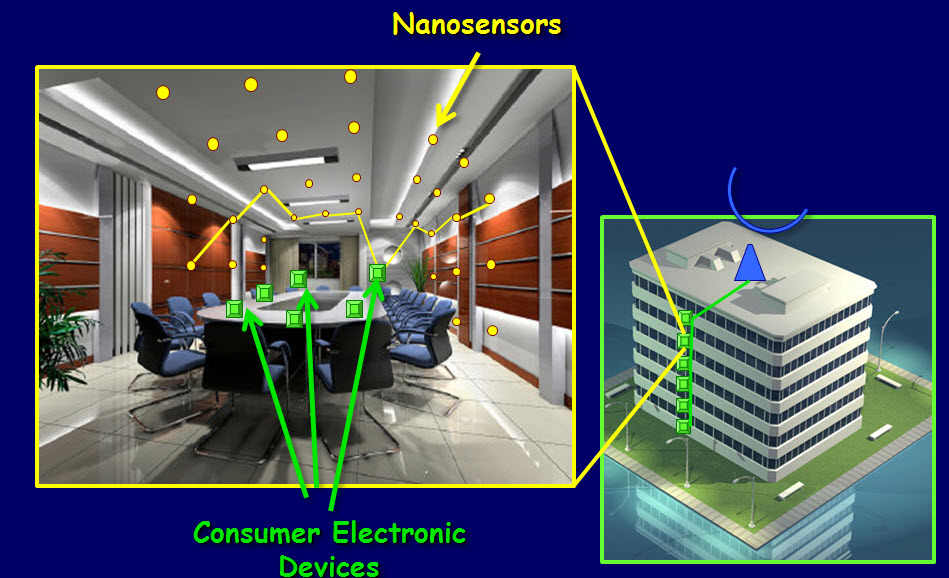
Chemical/biological attack prevention (credit: Ian Akyildiz and Josep Jornet)
They could also be used in new biological and chemical hazard detection systems, he said.
“Similarly, the very small size of the graphene-based nano-antennas and nanotransceivers makes them also suitable for Wireless Network-on-Chip (WNoC) applications. For example, very high-speed wireless links across nanoprocessors can enable transformative designs in high-performance large-scale multi-core computing architectures.
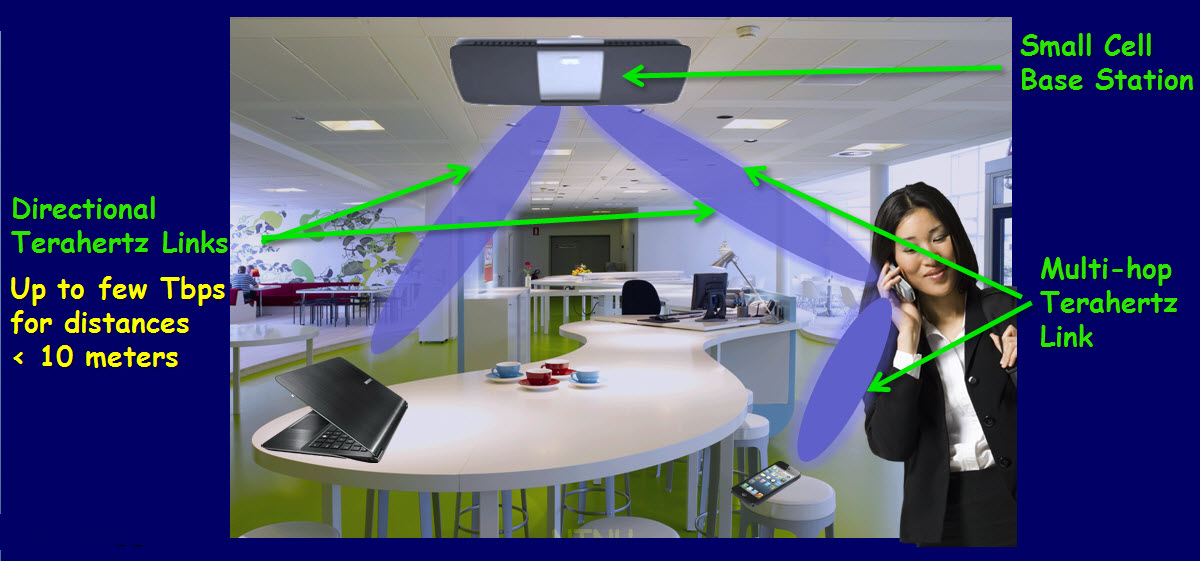
Terahertz band communication for small cells in beyond-4G (B4G) cellular systems (credit: Ian Akyildiz and Josep Jornet)
“On the other hand, the proposed graphene-based nano-antennas and nanotransceivers are a potentially enabling technology for ultra-broadband communications in the THz Band. The increasing demand for higher speed wireless communication “anywhere, anytime” has motivated the exploration of higher spectral bands for communication. By moving to the THz Band, very high transmission bandwidths become available (from tens to hundreds of GHz, at least, and up to a few THz).

Wireless high-volume storage transfers (credit: Ian Akyildiz and Josep Jornet)
“For the time being, challenges in the generation and detection of THz Band radiation from compact transceivers have limited the potential of this field. Graphene brings the THz Band one step closer to practical applications in short-range (up to a few meters at most) wireless communication and networks. For example, we can think of ultra-high-speed wireless networks as well as ultra-fast data transfers among nearby devices (e.g., to transfer the content of a blue-ray disk to an iPad would take approximately less than a second).
“The current work is mainly based on novel analytical models as well as accurate simulations. We expect to have a working prototype of the antenna within 6 months to 1 year. In parallel, we are working on the idea of an entire transceiver based on graphene. The commercialization of the technology will still have to wait at least a few years. One of the main challenges is actually the industrial manufacturing of high quality graphene structures, which is needed for practical commercialization.”
The research was supported by the National Science Foundation.
* Frequency in Hz = c/wavelength in meters, where c = 3×108. So for an antenna 1 micron (10-6 meters) long, the resonant frequency would be 3×1014 or 100 THz.